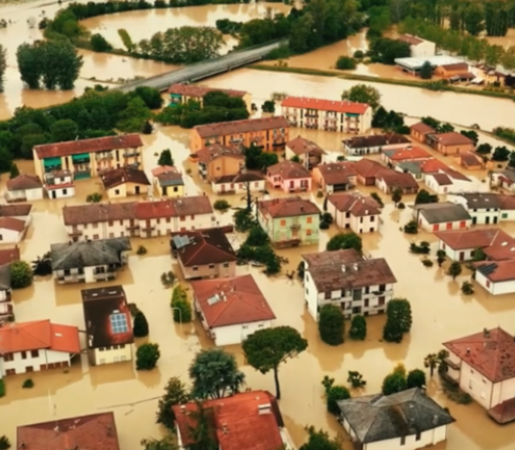
Faenza
AQUAGREEN - Acquiring Urban Resilience Against Floods and Droughts: a novel citizen-powered integrated Green and Blue System.
About the project
The innovation of AQUAGREEN is to test in Faenza innovative solutions to make urban areas more resilient to extreme weather events, which are becoming more frequent and dangerous. It is a response to the devasting floods of May 2023 in Faenza, which only highlighted the reality of climate change at local level and its impact in making territories and populations more vulnerable.
The central solution of the project is a blue-green Multifunctional Resilience Park Living Lab (MRPLL) built in a public area (around 3.5 ha) in a district particularly devasted by the floods: Borgo Durbecco. Different solutions, usually carried out individually, are being integrated through the MRPLL, in an innovative, digital, and high-performing combination. This includes elements such as permeable pavement to favour water infiltration, rain gardens, tanks to collect rainwater for use in periods of water scarcity and green roofs. A photovoltaic plant is another part of the solution to ensure electricity power for drainage pumps during blackouts. The Living Lab uses a digital interface for constant citizens’ involvement in creative co-designing.
The MRPLL is complemented by two connected tools, operating at a wider territorial level: a spatial decision support system that considers data in real-time, fed by newly installed sensors, and an innovative early warning system to better enable public authorities to alert the whole population on time.
The integration of these diverse solutions in a unique system replicable at a wider scale in the EU is the leading innovation and originality of the project.
Challenges
Due to its nature, location and topography, Faenza has proved to be particularly exposed to the consequences of climate change, including: devastating floods; droughts; and extreme temperatures. The city identified the need to introduce appropriate nature-based solutions to mitigate these risks and attempt to preserve and protect citizens' lives and well-being from the consequences of climate change, ensuring a liveable, healthy and safe city.
-
Mitigating the significant impact and increasing risks of flood events in the city of Faenza.
-
Mitigating also the impact of drought events in this southern European location.
-
Ensuring that local populations are able to respond effectively and in time to extreme weather events, in order to limit damage to people and their property, as well as to the territory in general.
-
Prevent and fight the growing climate of citizens' distrust towards institutions and their sense of abandonment in the face of extreme weather events.
Proposed solutions
AQUAGREEN takes up the challenge of studying and realising an experimental city model conceived through nature-based (green and blue) solutions to address the challenges caused by extreme weather events. The ‘Living Lab’ model is designed for and realised in a particular pilot area of the city, which can then be replicated in other areas of the city itself, or in other European cities. The solution allows for constant citizens’ involvement and incorporates digital support tools to support decision making and informing citizens.
-
A pilot Multifunctional Resilience Park to act as a ‘Living Lab’, where different blue-green solutions are tested in integrated ways, including de-paving, innovative drainage, accumulation paving, green roofs and rainwater storage.
-
A spatial decision support system that considers data in real-time in order to facilitate urban planning, decision-making and risk identification, fed by newly installed sensors and the ongoing monitoring of the MRPLL.
-
An innovative early warning system to better enable public authorities to alert the whole population on time of potential flood risks and connected with civil protection services.
-
Engagement of citizens and interested stakeholders in understanding and responding to risks of climate-related hazards.
Milestones
Design of methodology to involve citizens in co-creation of green and blue solutions.
Development of an innovative system for alerting citizens about extreme weather events.
MRPLL equipped with green & blue solutions against extreme weather events.
SDSS supporting policy makers and urban/territorial planners.